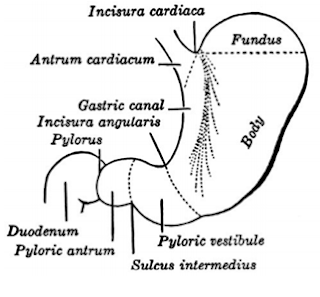THYROID PHYSIOLOGY 2
1. How
is thyroid gland function regulated ?
·
Like
any endocrine glands the secretion of thyroid hormones are regulated by
pituitary gland and hypothalamus.
2. How
does pituitary gland regulate thyroid hormone synthesis?
·
TSH
is a glycoprotein which is secreted by thyrotropes in ant pituitary.
·
TSH
release is stimulated by TRH (thyrotrophin releasing hormone).
3. How
does TSH function?
·
It
is secreted from ant pituitary in a pulstaile manner.
·
Secretion
is high in the evening.
·
It
then acts on thyroid hormone by stimulating both adenyl cyclase and
phospholipase C enzyme.
·
TSH
regulates all the steps of thyroid hormone synthesis.
4. What
are the subunits of TSH?
·
It
is composed of Alpha and beta components.
·
Alpha
component is common to FSH,LH and HCG.
·
Beta
component is specific and is important for its function.
5. What
is negative feedback loop?
Increase in T3 and T4 levels
decreases TSH and TRH secretion and vice versa.
T4 is
more important in suppression of this TSH and feeback suppression.
6.
TSH secretion is inhibited by a very small increase in serum T4 and T3 concentrations and it increases in response to very small decrease in serum T4 and T3.
TSH secretion is inhibited by a very small increase in serum T4 and T3 concentrations and it increases in response to very small decrease in serum T4 and T3.
A very
tight control of TSH secretion is maintained within a very narrow limit.
An
exception is low T3 in case of nonthyroidal illness has little effect on TSH
secretion.
7. What
are other hormones that can effect Thyroid synthesis?
·
Dopamine
@ > 1 mcg/kg/m – suppresses TSH secretion
·
Dopamine
antagonist – increases TSH
·
Cortisol
– Suppresses TSH secretion .
·
Somatostatin
and analogue octreotide reduce TSH concentration.
All
these effects are transient and sustained increase in these hormones do not
cause sustained effect.
8. What
are the factors altering peripheral conversion of T4 to T3?
Peripheral conversion by type 1 deiodinase
BUT TYPE 2 DEIODINASE WHICH IS PREDOMINANT IN
BRAIN AND PITUITARY IS ACTIVITY BY HYPOTHYROIDISM AND INHIBITED BY
HYPERTHYROIDISM
NO EFFECT OF PTU ON TYPE 2 DEIODINASE.
NOTE: The production of T3 in different tissues is regulated in different ways
and that changes in thyroidal or extrathyroidal thyroid hormone production, as
manifested by their circulating concentrations, are not the only and, perhaps,
not the major determinants of intracellular T3 availability.
Local
regulation of T3 production may be particularly important in reducing the
impact of thyroid deficiency in tissues such as the brain and pituitary, and
this local regulation undoubtedly leads to differences in T3 content in
different tissues in patients with nonthyroidal illness.
9. Can
disorders of Thyroid binding globulin present with disease?
NO
clinical disease and do not require treatment.
They
are found incidentally due to abnormal TFTs.
10. What
is congenital thyroid globulin deficiency and how do they present?
It
is X linked Dominant trait
It
is characterized by low total T4 but free T4 and TSH are normal.
Confirmed
diagnosis by low level or absence of TBG.
No
treatment is required
Diagnosis
is required to prevent unnecessary treatment for hypothyroidism
11. What
are some acquired causes of TBG deficiency?
Androgens
Anabolic
steroids
Glucocorticoids
Liver
disease
Severe
illness
Nephrotic
Syndrome
Protein
losing enteropathy.
12. What
is congenital TBG excess?
·
X
linked dominant condition
·
Characterised
by High total T4 and Variably elevated T3 but normal free T4 and TSH
·
No
treatment is required but diagnosis is imp to prevent unnecessary treatment of
hyperthyroidism.
13. What
are some of the acquired causes of excess TBG?
Estrogen
Pregnancy
Hepatitis
Porphyria
Heroin
5-
flurouracil.
14. What
is familial dysalbuminemic hyperthyroxinemia?
·
It
is a autosomal dominant condition
·
It
is a condition characterized by abnormal albumin with markedly increased
affinity for T4.
·
LABS
– high total T4, normal fT3, fT4 and TSH.
15. What
is the relationship of amiadarone with thyroid?
It
is a class 3 antiarrhythmic drug which can cause both hyper and hypothyroidism.




Comments
Post a Comment